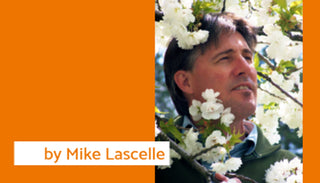Sometimes two things you love in life align and together they become something greater — such is the case with this article, where fine art and gardening become one. I can still remember the first painting that caught my eye, as 12-year-old Mike had decided to ride his bike to downtown Winnipeg and tour the art gallery, which was free back then. I stumbled upon an oversized copy of one of van Gogh’s sunflowers and was mesmerized, hence the reason that Vincent plays such a prominent role in this piece. My love for gardening and plants came from my maternal grandmother, one of those rare persons whose kindness could make anything thrive in her presence.
So, here it is, a pairing of one botanical impressionist (or post-impressionist) painting and a description of the flower or foliage they represent. After all, if they were good enough for Matisse or Pissarro to ponder, they are certainly worthy of our humble gardens.
Vincent van Gogh (Imperial Fritillaries in Copper Vase 1886) Crown Imperials
These dramatic bulbs are not often seen in private gardens as many gardeners don’t know what to do with them, although they fit right into the mixed border and naturalize well. Growing to heights of 3-4’ tall, they need to be placed mid to back border and you have a choice of red, orange, or yellow blooms. The scaled bulbs of Fritillaria imperialis need to be handled gently and are often planted on their side here in coastal BC, so as not to allow water to pool in the crown and rot it out.
Henri Matisse (Parrot Tulips II 1905) Parrot Tulips
Everything about Parrot Tulips is dramatic, as each flower is a unique piece of art. Parrot Tulips make superb cut flowers and are a beautiful focal point when grown in containers. Shown here is ‘Tropical Twist’, a fringed yellow tulip with sharply contrasting orange margins, although my favourite continues to be ‘Rococo’, a sport of ‘Coleur Cardinal’ with fiery red, carmine, and green petals. Look for the bulbs this September.
Camille Pissarro (A Vase of Peonies 1875) Peonies
Herbaceous peonies (Paeonia lactiflora) are enjoying a real renaissance right now and these long-lived perennials really do deserve a place in any sunny garden. Peonies make superb cut flowers (the photo shows my wife’s current bouquet) and you have a choice of many flower forms (single, double, anemone, bomb) and colours (white, soft yellow, pink, coral, red, and burgundy). Planting depth is critical (the tuber eye should be no deeper than 1.5-2”) or it will be reluctant to produce flowers.
Gustav Klimt (Cottage Garden 1907) Iceland Poppies
Papaver nudicaule or Iceland Poppies are the definitive ‘take-care-of themselves’ cottage garden perennial. All they really need is sun and good soil drainage and they will bloom their scarlet, orange, yellow, and white hearts out for months on end. They also make great cut flowers but are short-lived perennials, so let them self-seed.
Vincent van Gogh (Irises 1889) German Bearded Iris
Iris x germanica breeding has come a long way since 1889, so that now almost every colour combination imaginable is available, including pure purplish-black and fantastic bicolors like ‘Ancient Echoes’, with its golden-yellow standards and mahogany-brown falls. German Bearded Iris are relatively easy-care but require division every 2-3 years, high phosphorus fertilizer, and the top of the rhizomes sitting just above soil level.
Pierre Bonnard (Garden with Red Tree 1909) Staghorn Sumac
There is no mistaking the rich autumn tones of Rhus typhina in fall with female trees also bearing large velvety staghorn fruit clusters that can be used to make a delicious native lemonade. This smaller tree tolerates poor, sandy soils and is useful for erosion control on slopes, as it tends to form dense colonies over time.
Mary Cassatt (Lilacs in a Window 1880) French Lilacs3>
The old-fashioned French lilacs get their common name from the fact that many of the hybrids that we still plant today were bred in France in the late 1800s. What’s not to like about a long-lived shrub with very fragrant flowers that taste as good as they smell. While relatively easy to grow, Syringa vulgaris does prefer a more neutral pH, so here in coastal BC we should lime the soil around them occasionally.
Alfred Sisley (Apple Trees in Bloom) Apple Blossoms
We all rave about cherry blossoms in flower but the humble apple still offers a beautiful display of sweetly scented and tasty (but eat in moderation) pink-tinted white blooms. If you want the fruit then you have to remember that most apple trees are not self-fertile and some like the delicious Malus domestica ‘King’ (or ‘King of Tompkin’s County’) are triploids, meaning that they produce sterile pollen.
Claude Monet (Wisteria 1917-20) Wisteria
As one of our most vigorous ornamental vines, Wisteria requires a sturdy support such as the Japanese footbridge in Claude Monet’s Giverny garden. While there are many species, hybrids, and cultivars to choose from, as well as flowers ranging from white to pink, purple, and bicolor, the care remains the same. Do not fertilize with high nitrogen fertilizers as this will create plenty of foliage but few flowers and keep those strong roots away from house foundation drains.
Vincent van Gogh (Six Sunflowers 1888) Sunflowers
Most of van Gogh’s sunflower paintings were created as gifts for fellow post-impressionist Paul Gauguin but I chose to feature this one with the royal blue background because it was destroyed during a US air raid in Japan back in 1945. Sunflower plants, or Helianthus annuus, are one of the most impressive summer flowers to grow from seed, with taller varieties growing 9-12’ and producing seedheads up to 12” wide. These cheerful annuals are not only good for the soul, but they also nourish the birds and butterflies.
If you enjoyed this article then consider reading some older blog posts of mine called ‘Gauguin the Gardener’ and ‘Vincent van Gogh Lives Just Around the Corner’ which can be found on my website, www.soulofagardener.wordpress.com.


